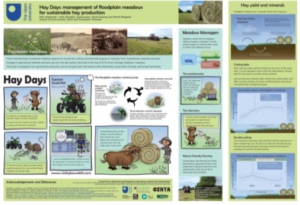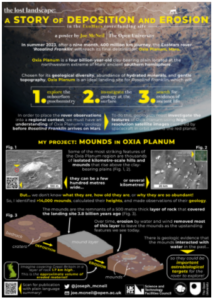A couple of weeks ago I was lucky enough to be invited to take part in a lunchtime seminar on Research Impact in the Engineering and Innovation department, with the new Research Impact Manager Rebecca Coatswith. It was a great session, with lots of interesting discussion around how evidence of impact can be measured, collected and proven. The work we do in the Library to support researchers in publishing their outputs (papers and data) has a direct effect on this and we look forward to working more with Rebecca in the future.
In this blog post she talks about her work at the Open University and how she is able to help you…

Impact by Walter Wilhelm on Flickr
I joined the Open University on 1st December last year, taking over the role of Research Impact Manager. Although I’m new to the organisation, I live locally and have been aware of the OU and its work for many years, so I am excited to be a part of this – especially as it gives me an opportunity to work across all of the schools and faculties.
The main purpose of my role is to help support and develop research impact across the University. In recent years there’s been an increasing emphasis on researchers and research institutes to demonstrate a return on investment from funders, by being explicit about the difference their research makes outside academia – or in other words, to demonstrate the impact of their research.
The range of definitions of research impact (there are plenty!) doesn’t necessarily make it easier for researchers to come to an understanding of what impact is, but the idea underpinning each of these definitions is that there needs to be a demonstrable change or effect on wider society that can be linked directly to the research.
When I’m talking to researchers and academics about research impact or reading impact statements, I find it useful to focus on a couple of key themes to help unpack potential impact:
- Why is the research important?
- What might change as a result of the research (e.g. who or what might be affected; what is the intended impact)?
- How will this change/impact be evidenced?
The first question is often referred to as the ‘so what’ question, or ‘why should anyone care’. It might be obvious to those working in a particular field why research is needed, but it’s not always so clear to others. Being able to explain this clearly and succinctly to someone outside your field can help point the way to potential impacts and often raises some interesting questions; it’s also a useful approach to developing your impact pathway.

Public Toilet by ilovebutter on Flickr
Sometimes the intended impact of research is obvious, for instance work focusing on the development of quicker, cheaper or more reliable medical diagnostics has the potential to impact patients, their carers and medical science more generally. But not all research is so clear cut – for example, what impact would you expect to come from research about public toilets, or about bee-hives? (Follow the links at the bottom of the page for some interesting answers that demonstrate a wide range of impacts and engagement activities.)
Since I’ve been here, I’ve had a lot of questions about how to evidence impact. Planning for impact should not just include who will be engaged in the research, but how they will be involved, and with what effect. Careful planning, sustained engagement meticulous recording and timely follow-up are essential in building clear picture of outcomes and impacts.
I’m working on a range of guides that I hope will help with impact planning and evidence capture. More importantly though, I’m doing my best to get out and about to meet with researchers and academics to talk through research and impact and offer practical support.
If you have a new project, bid proposal or award entry and want to talk through some aspects of impact, please do get in touch.
Impact examples:
To find out more about support for Research Impact at the OU, visit the Research and Academic Strategy Intranet site (login required)





